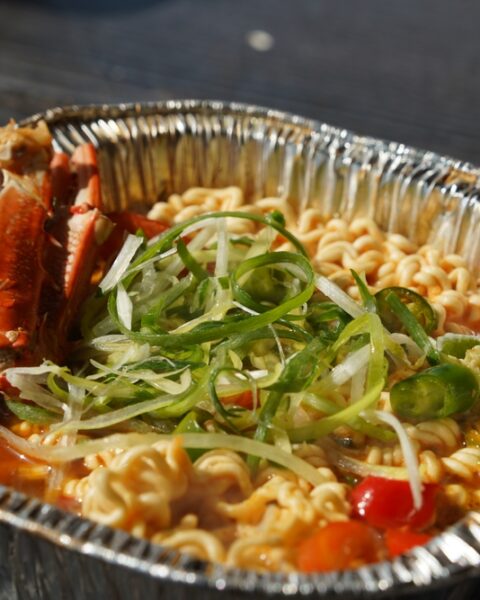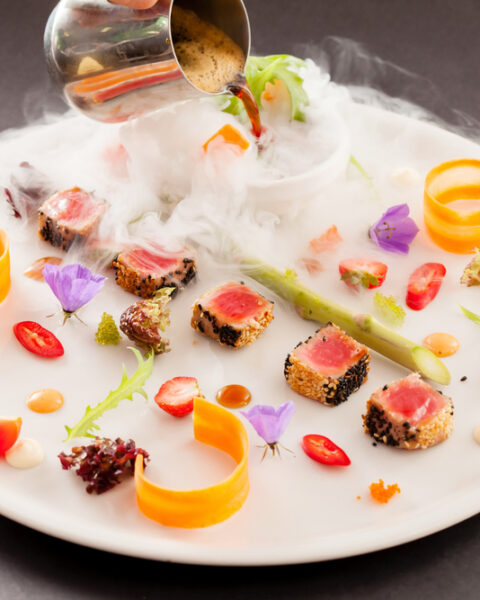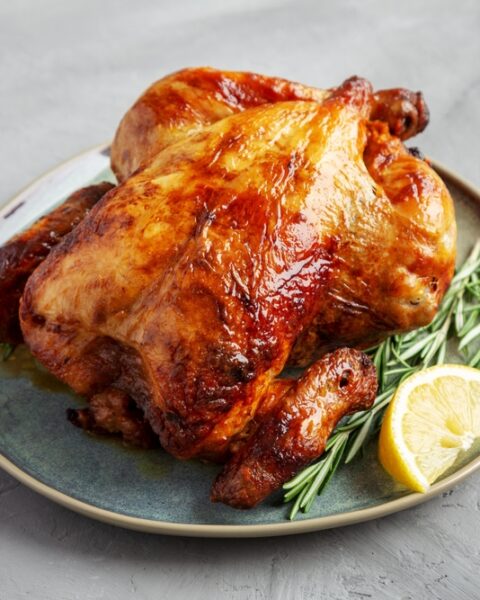Some of the world’s most beloved dishes come with a side of controversy. Whether it’s a heated debate over where the dish originated or an argument about how it should be made, food history is full of surprises. From pineapple on pizza to the invention of sushi, these iconic dishes have sparked culinary feuds that still get people talking today. Check out these fascinating and sometimes unexpected stories behind dishes with histories as flavorful as the meals themselves.
Contents
- 1 Caesar Salad
- 2 French Fries
- 3 Chicken Tikka Masala
- 4 Peking Duck
- 5 Hawaiian Pizza
- 6 Eggs Benedict
- 7 Cobb Salad
- 8 Sushi
- 9 Pad Thai
- 10 General Tso’s Chicken
- 11 Fettuccine Alfredo
- 12 Chili
- 13 Croissant
- 14 Tacos
- 15 New York Cheesecake
- 16 Pho
- 17 Spaghetti and Meatballs
- 18 Pizza
- 19 More From RetailShout
- 20 The 14 Ultimate Ranking of Trader Joe’s 2024 Boxed Mixes
- 21 14 Iced Tea Brands That Stand Out from the Rest
Caesar Salad
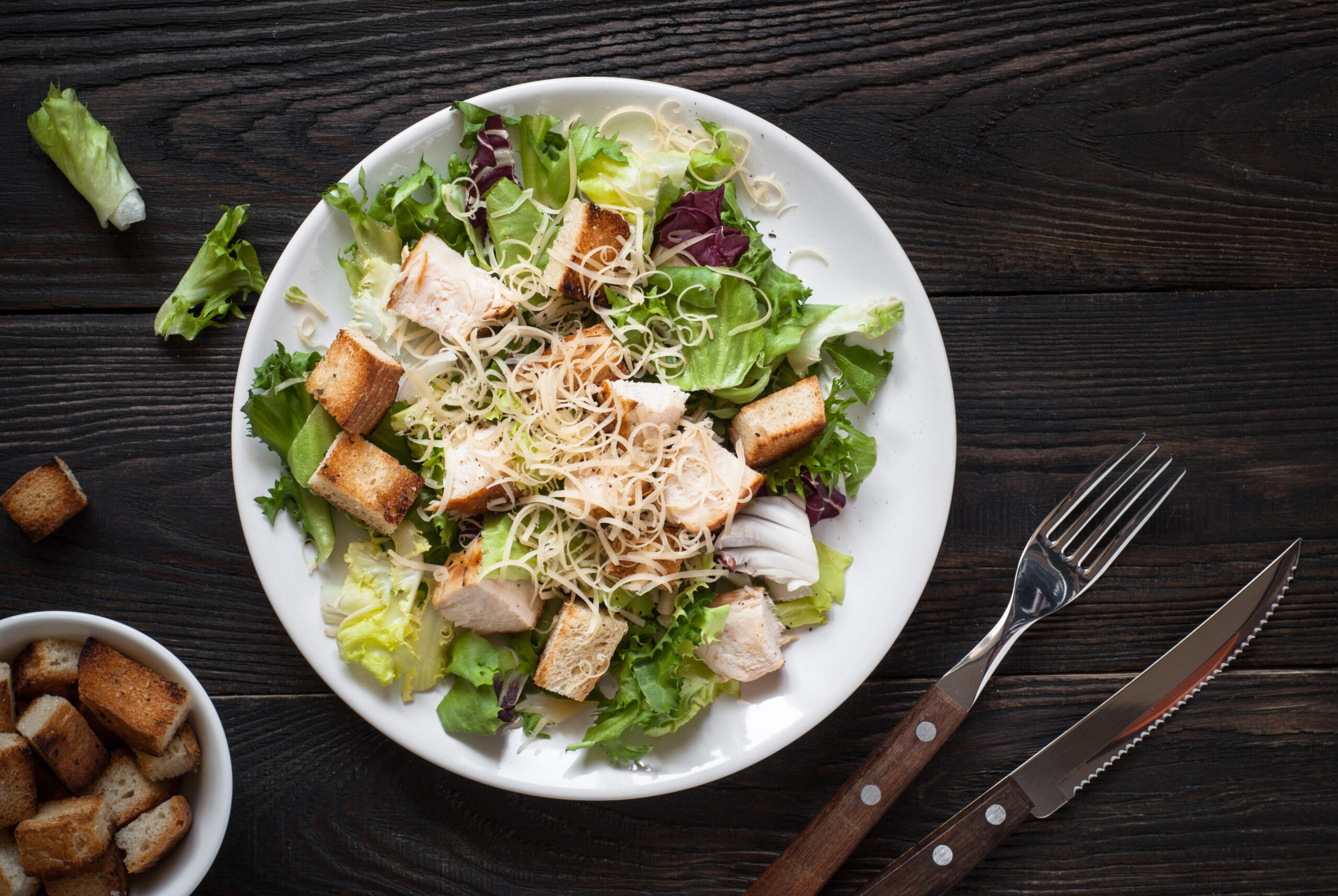
The Caesar salad, known for its crisp romaine lettuce and creamy dressing, was invented in Tijuana, Mexico, by Italian immigrant Caesar Cardini in the 1920s. Its creation was born out of necessity during a kitchen shortage, where Cardini had to work with limited ingredients. The dish became an instant hit, but controversy surrounds whether Cardini or his brother Alex should be credited for the recipe. Some say it wasn’t Caesar at all but his chef, Livio Santini, who created the salad. Despite the dispute, Caesar salad became an iconic dish, with variations spreading worldwide.
French Fries
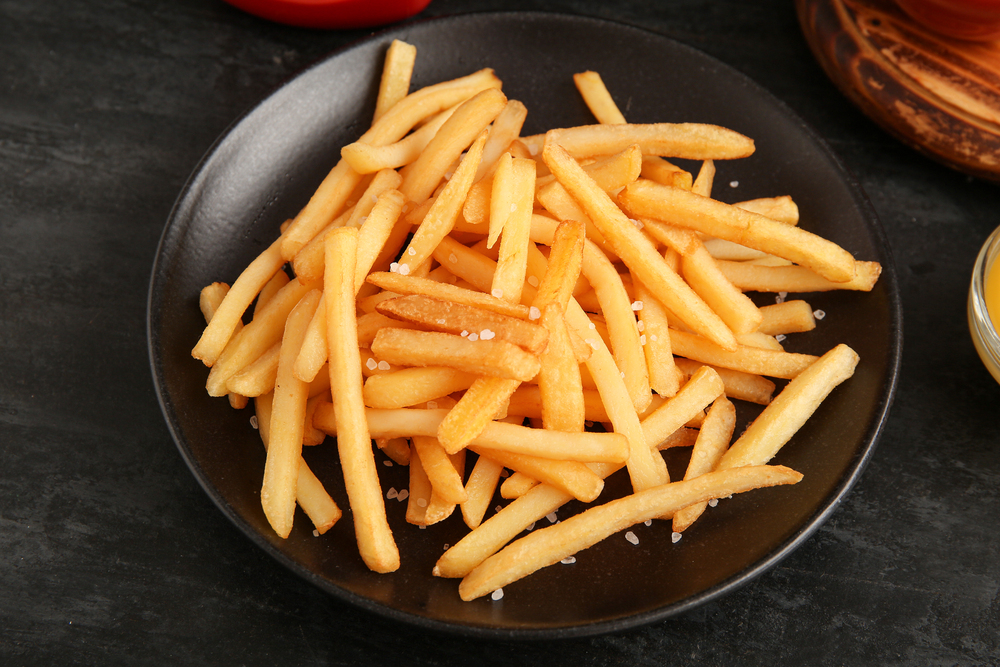
French fries have long been a staple in fast food, but their origin sparks debates between Belgium and France. Belgians claim they were frying potatoes in the 17th century, while the French argue their version, sold by street vendors in Paris, is the original. The name “French fries” only adds to the confusion, popularized in America by soldiers who associated fried potatoes with French-speaking Belgian troops. To this day, the true origin remains contested. Regardless, French fries are beloved worldwide, with variations like shoestring, crinkle-cut, and curly fries.
Chicken Tikka Masala
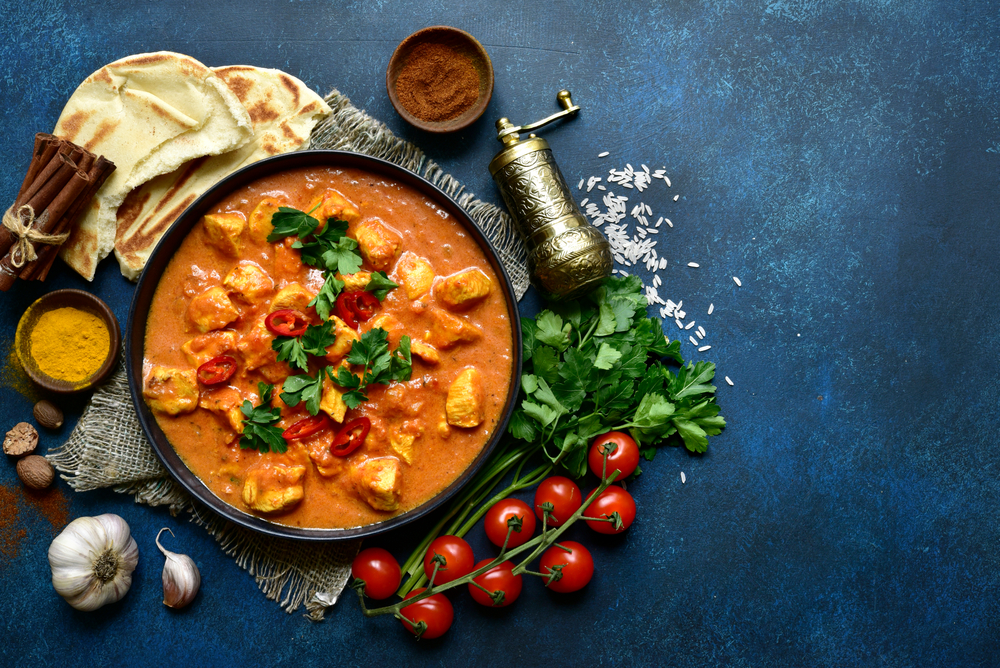
Often touted as a symbol of British-Indian cuisine, chicken tikka masala’s origin is hotly debated. Some claim it was invented in Glasgow by a Pakistani chef who added tomato cream sauce to satisfy a customer’s request for gravy. Others argue it was developed in India and popularized in Britain during colonial times. The dish has even been labeled Britain’s “true national dish,” but its precise origins remain unclear. Despite the controversy, chicken tikka masala remains a favorite in Indian restaurants across the globe.
Peking Duck
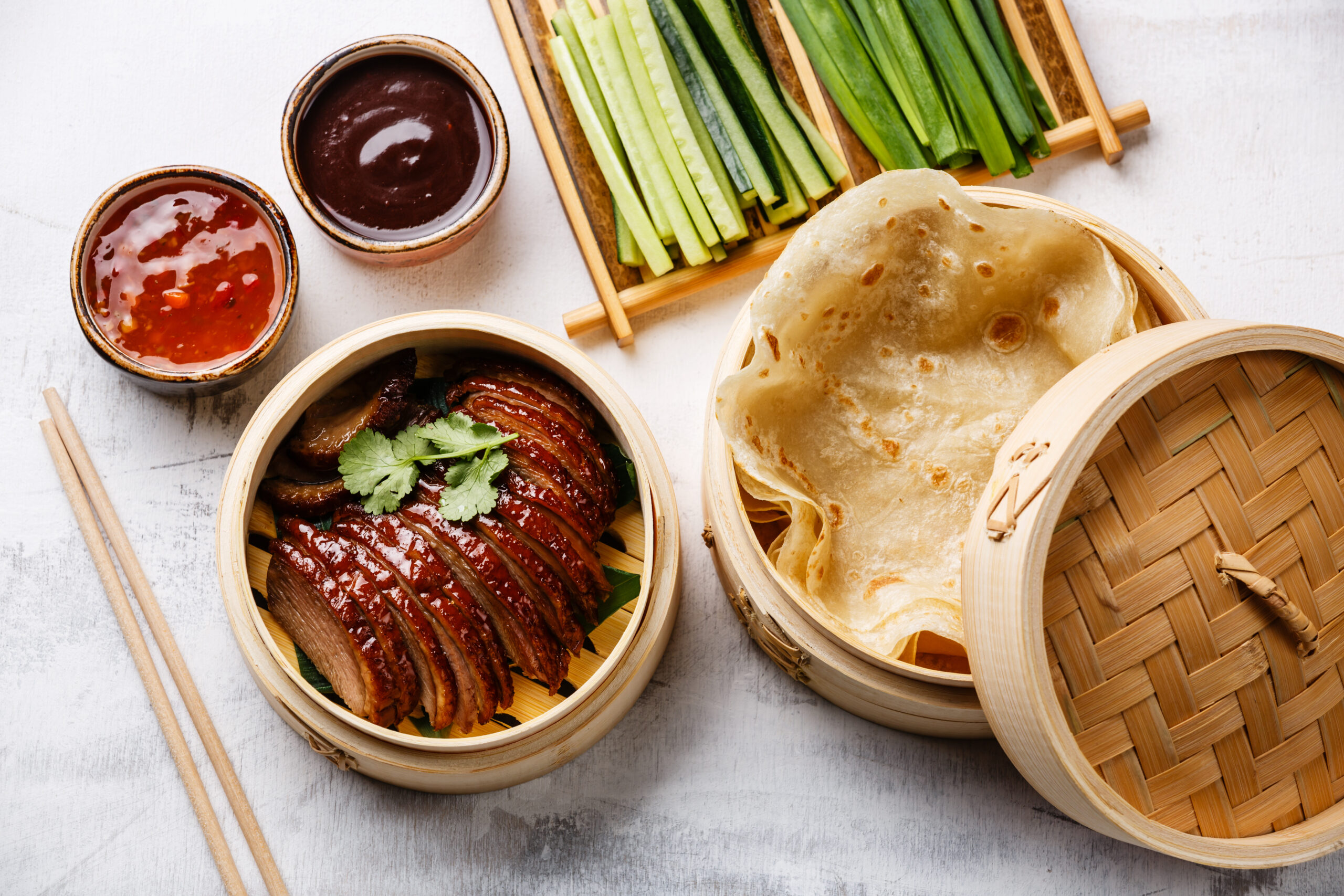
Peking Duck is a quintessential Chinese dish with a history dating back to the Imperial era, but its authenticity is questioned by some chefs and food historians. The debate lies in whether today’s version truly reflects the original dish served to emperors or if modern adaptations have diluted its legacy. Some argue that the preparation methods, especially the use of commercial ovens, have strayed far from traditional techniques. Despite these controversies, the dish remains a symbol of Beijing’s culinary culture, famous for its crispy skin and succulent meat. The question of its evolution, however, keeps its history intriguing.
Hawaiian Pizza
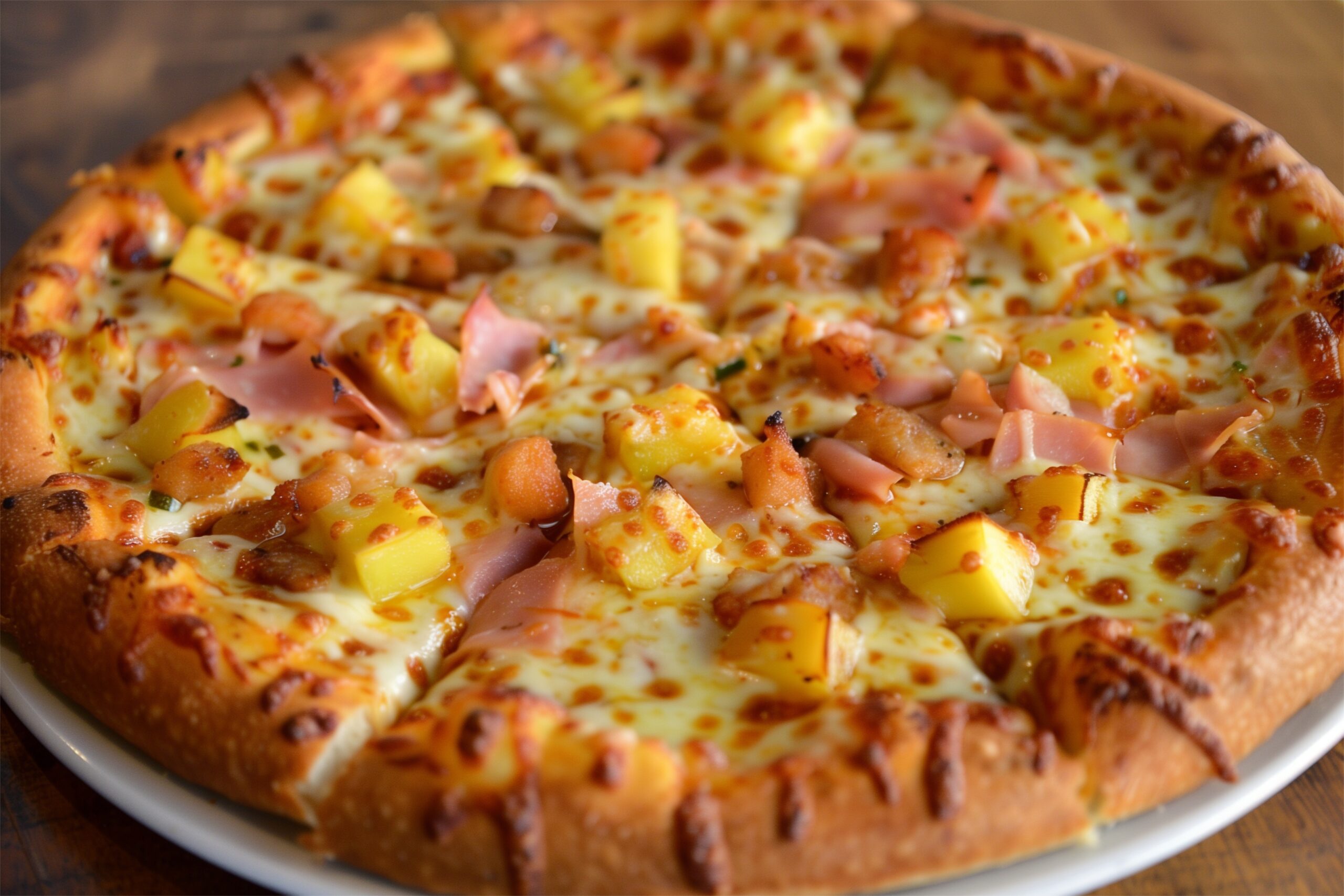
Few dishes have sparked as much culinary outrage as Hawaiian pizza, which pairs pineapple with ham on a tomato and cheese base. Despite its name, the dish was invented in Canada in the 1960s by Greek immigrant Sam Panopoulos. Pineapple on pizza remains one of the most divisive food debates, with strong opinions on both sides. Critics argue that fruit has no place on pizza, while fans appreciate the sweet and salty contrast. Love it or hate it, Hawaiian pizza is here to stay, and its controversial history only adds to its fame.
Eggs Benedict

Eggs Benedict, a brunch staple, has a murky origin with several conflicting stories about who first served it. One version credits a Wall Street broker, Lemuel Benedict, who allegedly invented the dish at the Waldorf Hotel in 1894 as a hangover cure. Another claims a woman named Mrs. LeGrand Benedict ordered something new at Delmonico’s, and the chef whipped up the iconic dish. Some believe it has French roots, given its similarity to various French egg dishes. While its true origin remains uncertain, the poached eggs, English muffin, and Hollandaise sauce combination remains a brunch favorite.
Cobb Salad
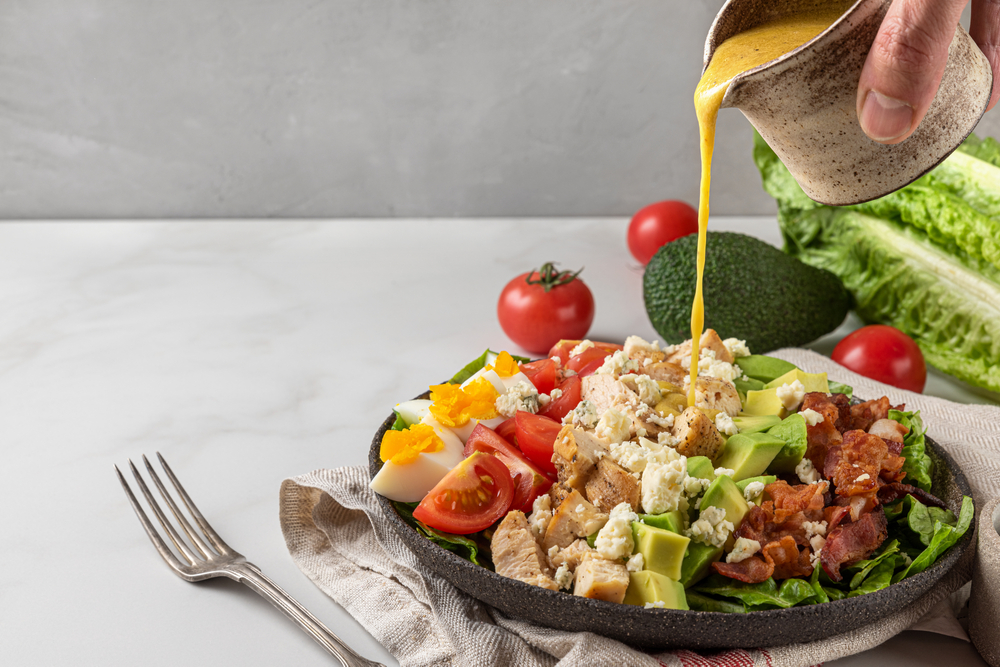
The Cobb salad, loaded with chicken, bacon, eggs, avocado, and blue cheese, has a history mired in restaurant lore. Many believe it was invented in the 1930s by Robert Cobb, the owner of The Brown Derby restaurant in Los Angeles. However, some claim that Cobb’s chef created the salad, and Cobb merely took credit for it. Another theory suggests the salad was named after a famous customer rather than the restaurant owner. Despite its debated origins, the Cobb salad has become a go-to dish in American restaurants, praised for its hearty ingredients.
Sushi
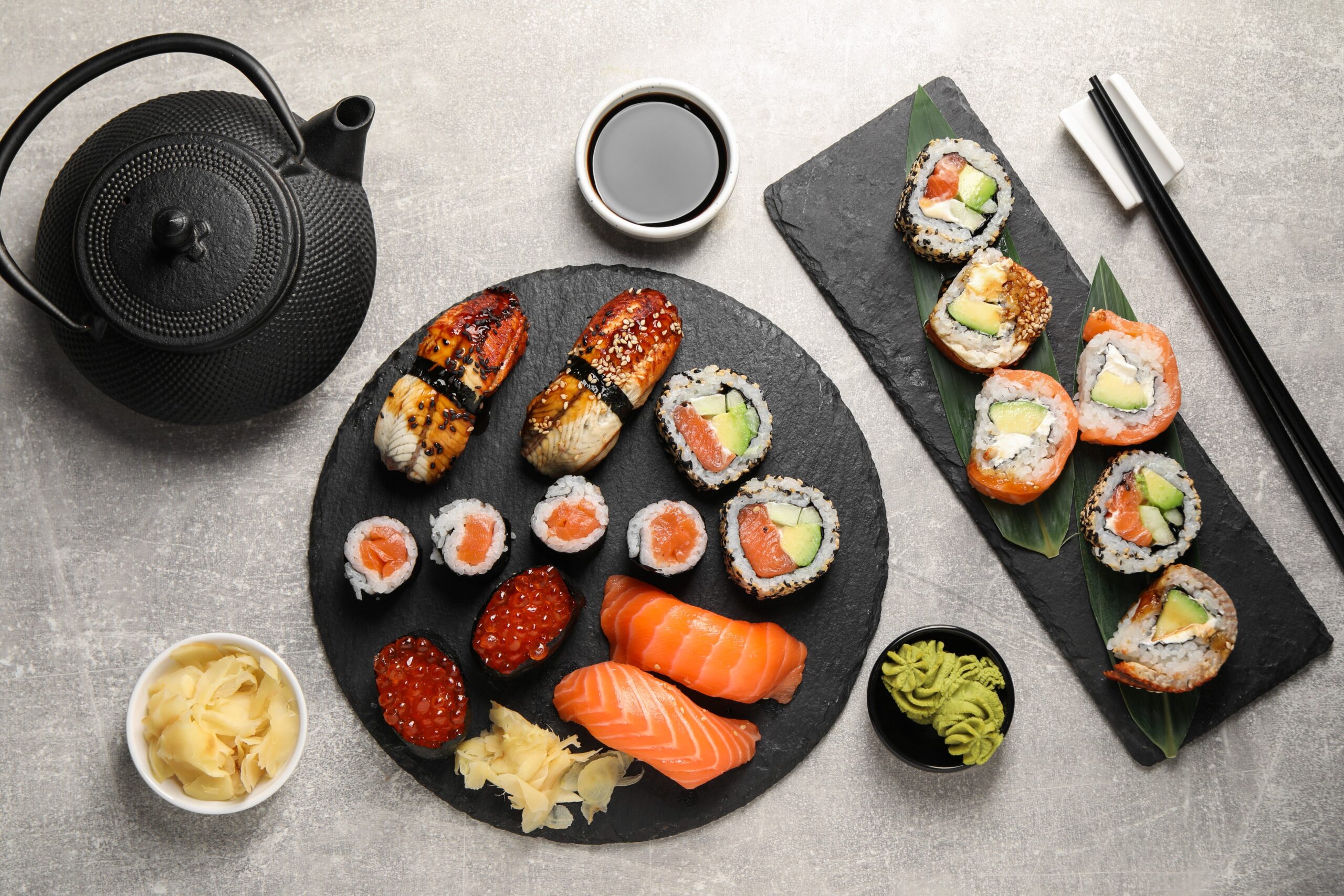
Though sushi is synonymous with Japanese cuisine, its roots are much more complex, with historical connections to China and Southeast Asia. The original form of sushi, known as narezushi, involved fermenting fish and rice, a practice originating in Southeast Asia. As it evolved in Japan, sushi took on the raw fish and rice combination that we know today. Some traditionalists argue that modern sushi, especially outside Japan, has strayed too far from its authentic roots. From its ancient origins to contemporary interpretations like California rolls, sushi’s journey has sparked debate over what qualifies as “real” sushi.
Pad Thai
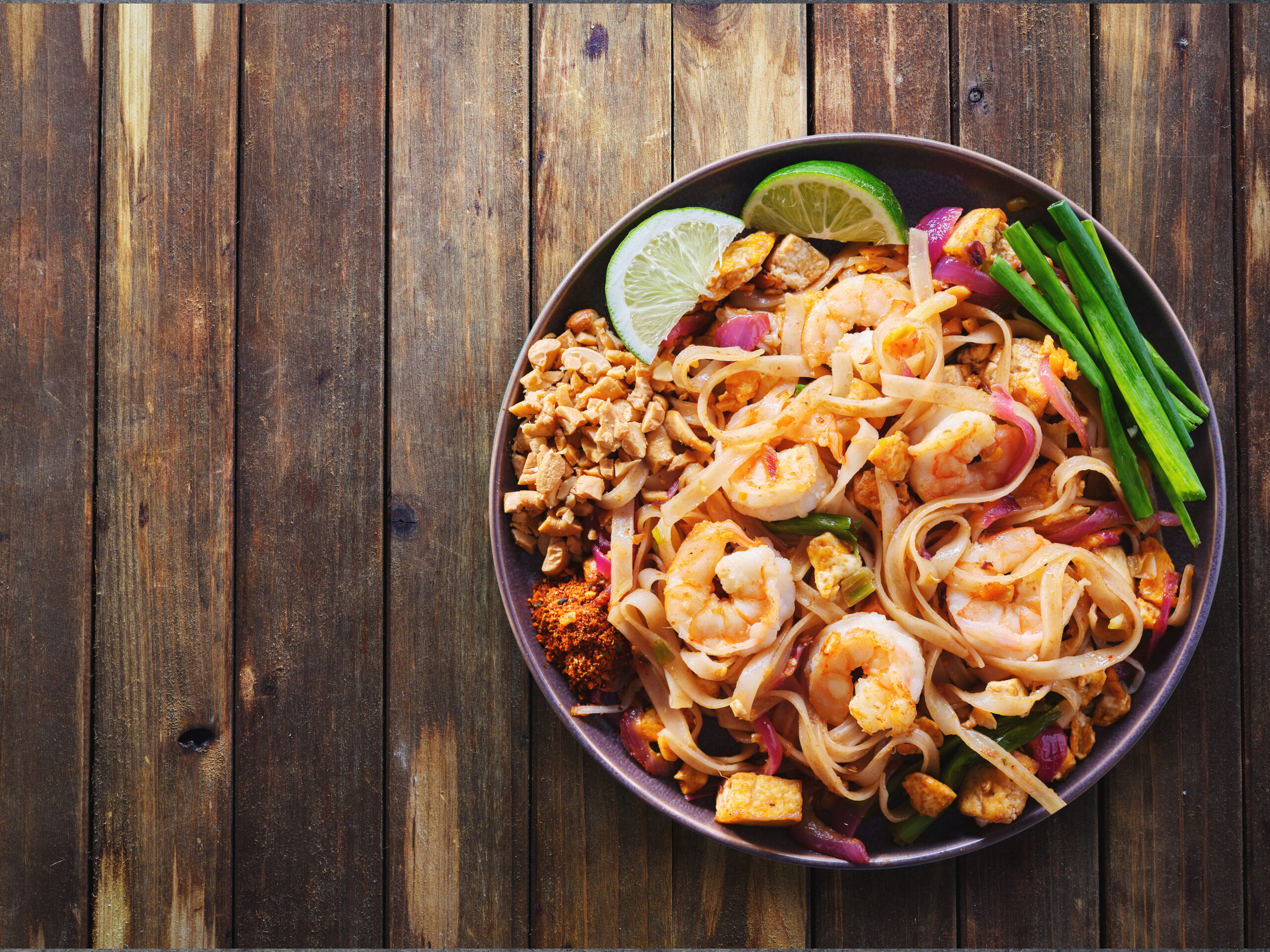
Pad Thai is often considered Thailand’s national dish, but its history is tied to politics and nationalism. It was popularized in the 1930s by Prime Minister Plaek Phibunsongkhram as part of a campaign to create a unique Thai identity and combat rice shortages. Some critics argue that its creation was a forced invention rather than an organic part of Thailand’s culinary heritage. Despite these claims, Pad Thai has become an international sensation. Its tangy, sweet, and savory flavors have won fans worldwide, making it a symbol of Thai cuisine, whether or not it’s entirely traditional.
General Tso’s Chicken
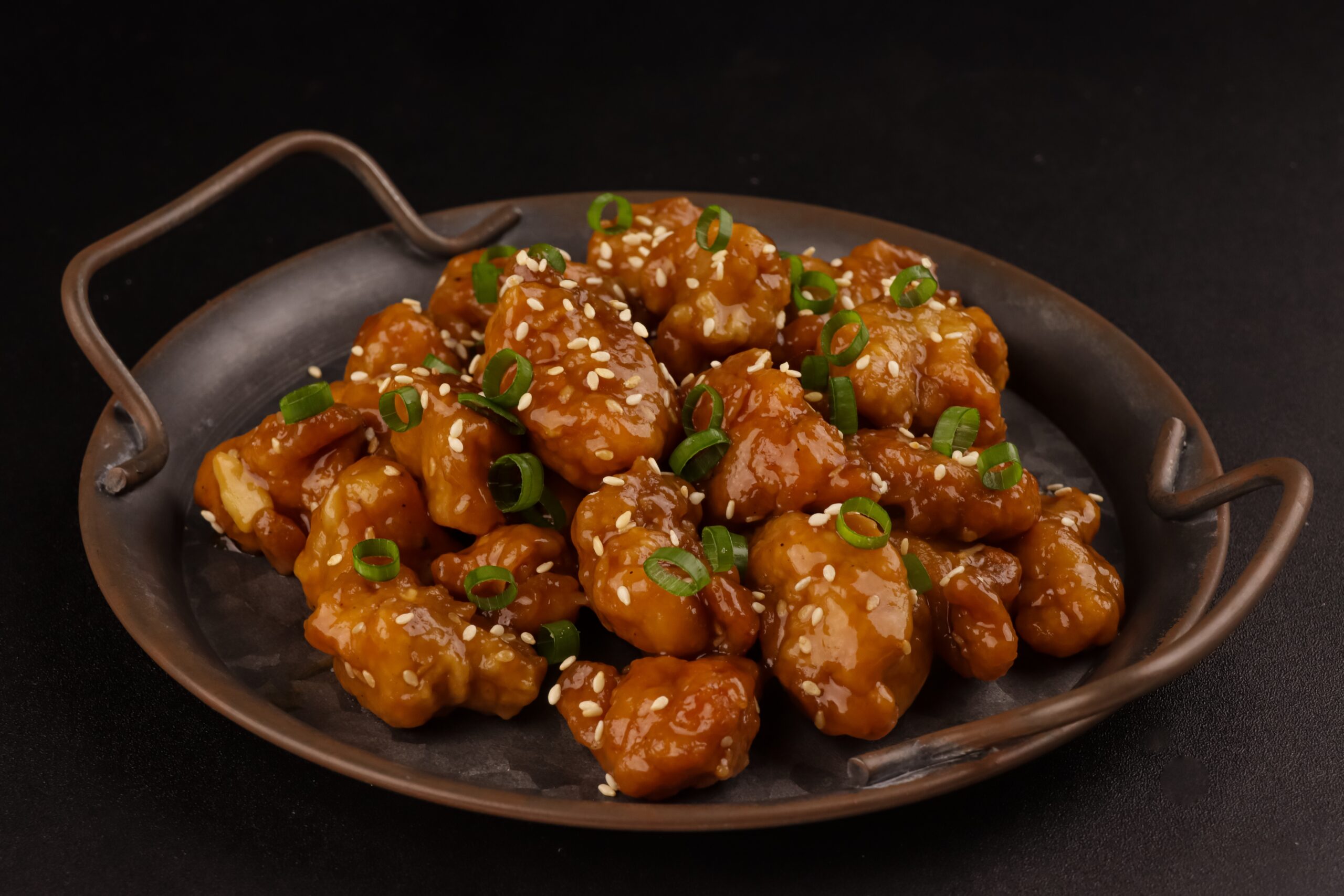
General Tso’s chicken, a sweet and spicy fried dish, is one of the most popular Chinese-American dishes, but its namesake never tasted it. General Tso was a 19th-century military leader from the Hunan province, but the dish has no connection to him or traditional Hunan cuisine. The dish was created in the 1970s by Taiwanese chefs working in New York to cater to American tastes. Despite its inauthentic roots, General Tso’s chicken has become a staple of Chinese takeout in the U.S. and a symbol of Chinese-American fusion cuisine.
Fettuccine Alfredo
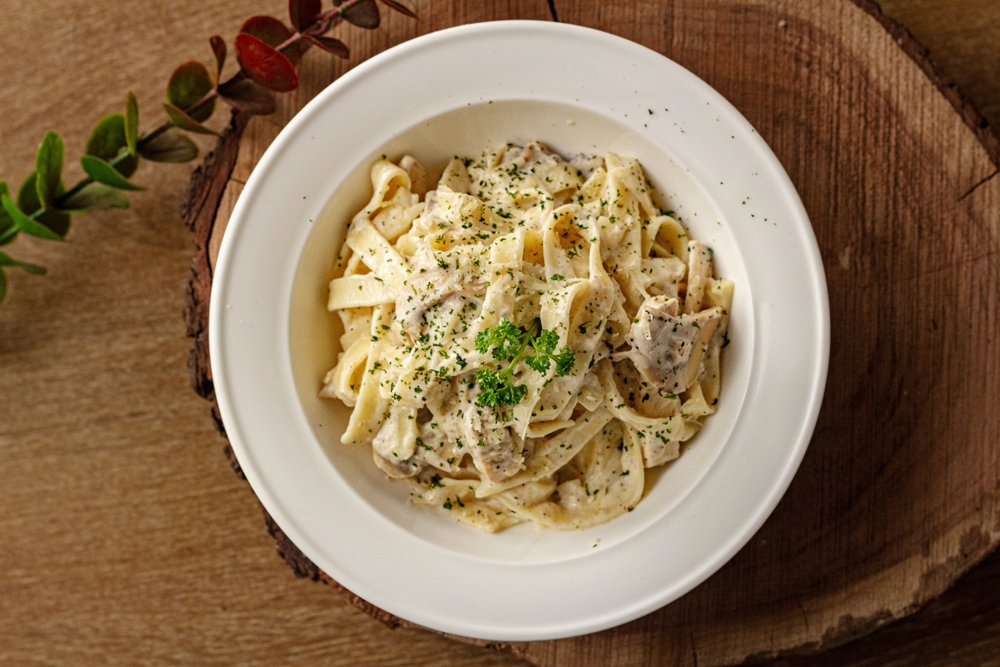
Fettuccine Alfredo is a creamy pasta dish associated with Italian cuisine, but its modern version bears little resemblance to the original. Alfredo di Lelio invented the dish in Rome in 1914 to satisfy his pregnant wife, combining pasta, butter, and Parmesan cheese. When American tourists brought the recipe back to the U.S., they added cream to the sauce, creating the rich dish we know today. Many Italians argue that the Americanized version is too heavy and inauthentic. Nevertheless, Fettuccine Alfredo remains a beloved comfort food across the globe.
Chili
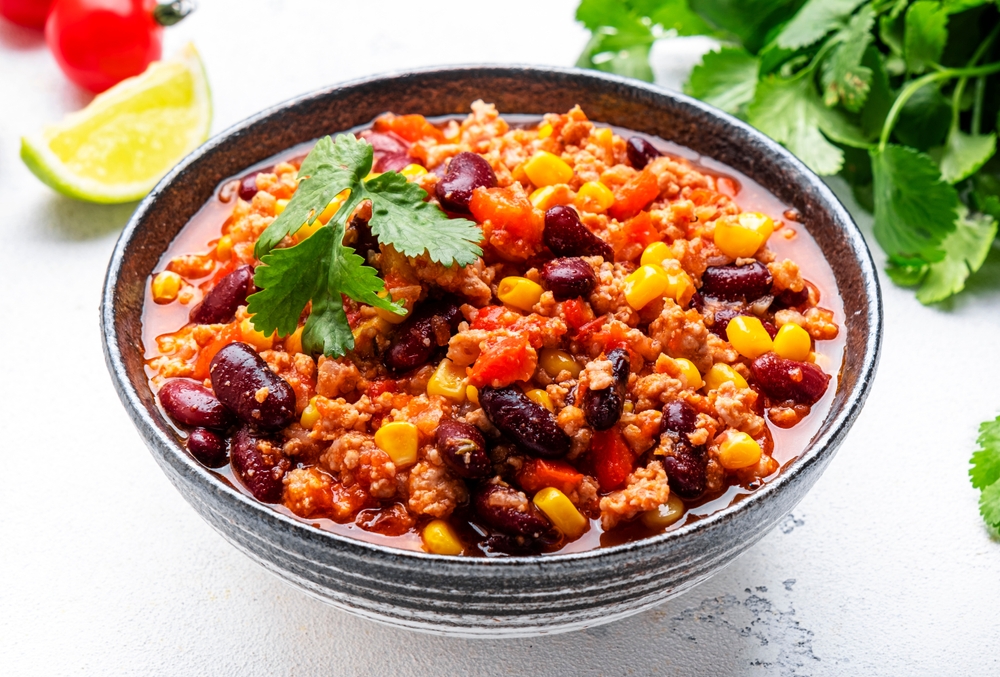
Chili, often referred to as chili con carne, has a contentious history, with Texas, Mexico, and even Spain claiming its invention. The dish, made from meat, chili peppers, and spices, is sometimes considered Tex-Mex, though purists argue it has deep Mexican roots. The “no beans” vs. “with beans” debate further divides chili lovers, with Texas-style chili often being bean-free. Some believe it originated from cattle drives in the American Southwest, while others trace it to Spanish immigrants. Regardless of its origin, chili has become a quintessential American dish, with each region adding its twist.
Croissant

The croissant, a buttery, flaky pastry, is often associated with France, but its origins trace back to Austria. The crescent-shaped pastry was created to celebrate a 17th-century victory over the Ottoman Empire. It was later introduced to France, where it became a breakfast staple. Some culinary historians argue that the modern French croissant is a distant relative of the original Austrian kipferl. While its history may be disputed, there’s no denying the croissant’s global appeal, with its delicate layers and golden crust.
Tacos
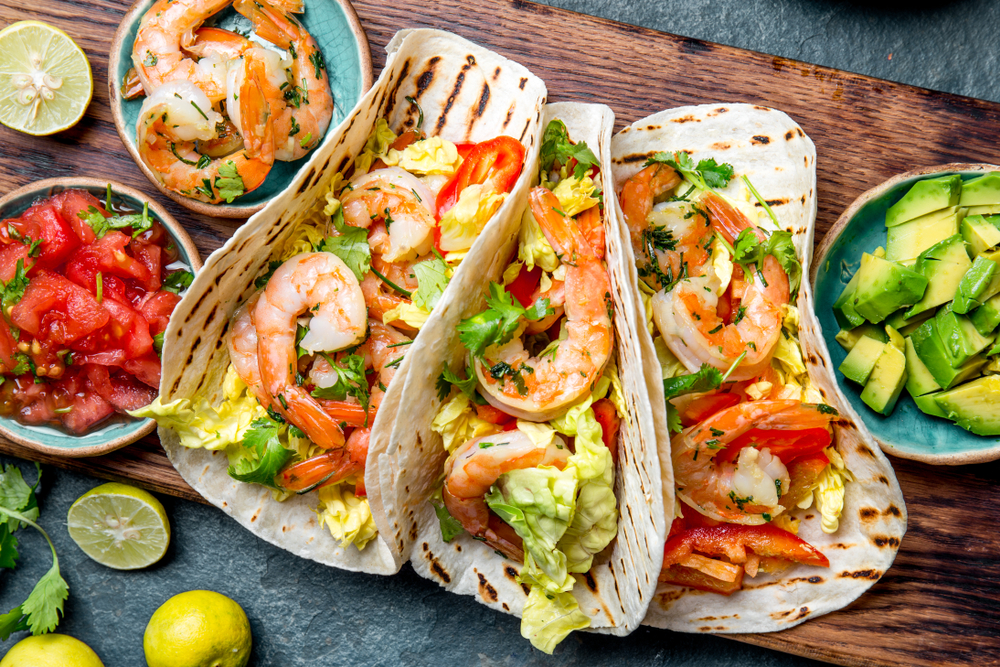
Tacos, a beloved street food, are often thought to be authentically Mexican, but their exact origin is complex. Some historians believe they date back to indigenous peoples who used corn tortillas to wrap food. Others argue that modern tacos were popularized by miners in the 18th century, who used them as portable meals. The globalization of tacos has led to the creation of many non-traditional variations, like the hard-shell taco in the U.S., which some purists say is not authentic. Despite these debates, tacos continue to evolve while remaining a staple of Mexican cuisine.
New York Cheesecake

New York cheesecake is famous for its rich, creamy texture, but the origins of cheesecake go back thousands of years. The earliest versions were made by the ancient Greeks, but it was Jewish immigrants in New York who perfected the modern version with cream cheese in the 19th century. The battle between different styles of cheesecake—New York vs. Italian ricotta-based—is still ongoing. Some argue that the New York version is too heavy, while others insist it’s the best. Despite the debate, New York cheesecake remains a quintessential dessert.
Pho
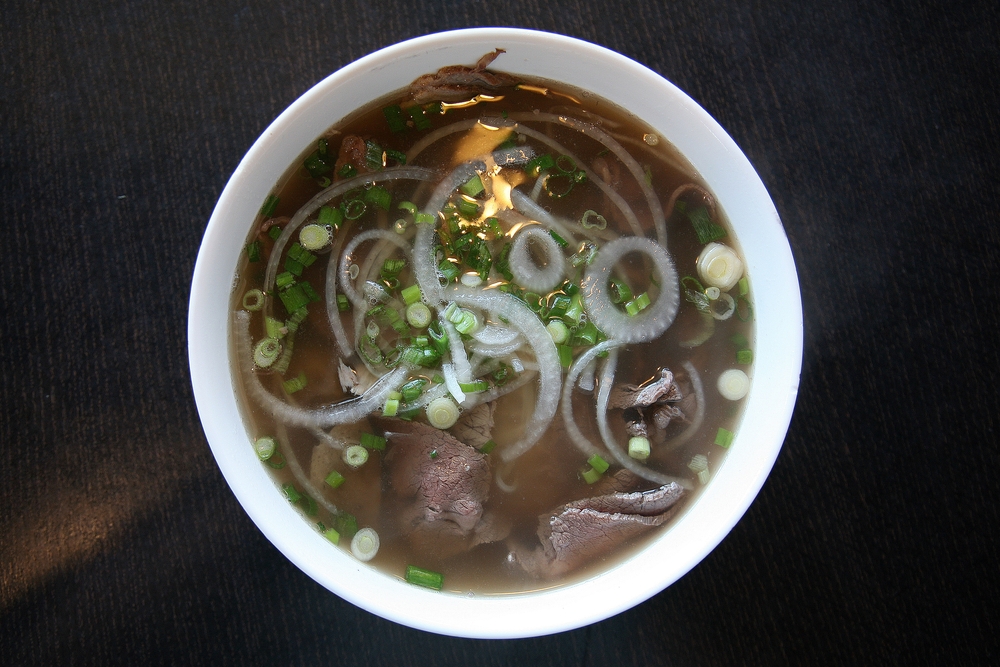
Pho is one of Vietnam’s most iconic dishes, but its history is tied to French colonialism. The dish combines elements of French and Chinese cuisine, with its name believed to be derived from the French word “pot-au-feu.” Some Vietnamese chefs argue that modern pho, especially as served outside Vietnam, has become too commercialized and strayed from its street food roots. The North vs. South Vietnam rivalry also adds controversy, as each region claims to make the “authentic” pho. Despite the disputes, pho has gained worldwide popularity for its aromatic broth and tender beef.
Spaghetti and Meatballs
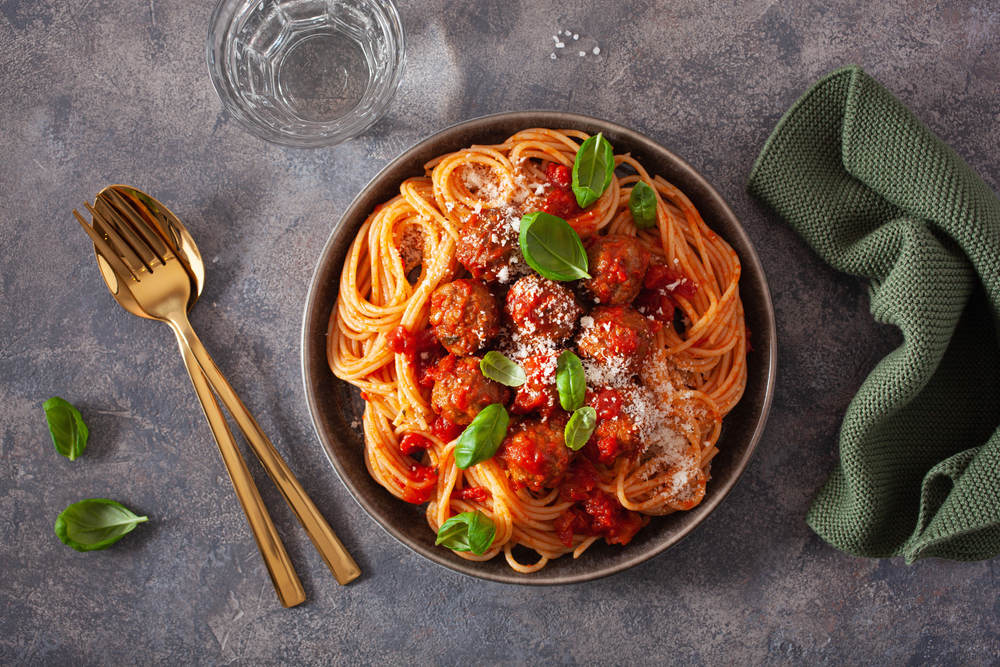
Spaghetti and meatballs, often considered a classic Italian dish, actually has little to do with traditional Italian cuisine. While Italians serve pasta with sauce and may include meatballs, the combination of the two is a largely American invention by Italian immigrants. The dish became popular in the early 20th century when Italian-American families sought hearty, affordable meals. Despite being more American than Italian, spaghetti and meatballs have become a symbol of Italian-American cuisine. This controversial history doesn’t stop it from being a beloved comfort food.
Pizza
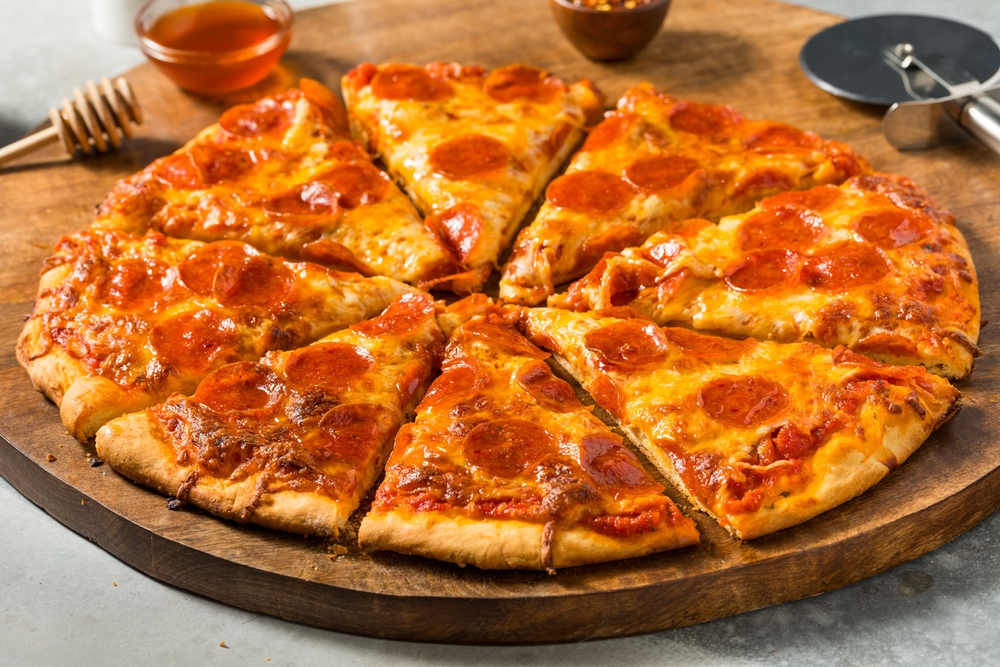
While pizza is often associated with Italy, the modern pizza we know today has been shaped by a variety of influences. The concept of flatbreads topped with ingredients existed in several ancient cultures, but it was in Naples that pizza as we know it truly evolved. However, it wasn’t until Italian immigrants brought pizza to the U.S. that it gained global fame. The argument over what constitutes “real” pizza, especially between New York-style, Chicago deep-dish, and Neapolitan, remains ongoing. No matter its origin or style, pizza has undoubtedly cemented its place as a global culinary icon.
This article originally appeared on RetailShout.
More From RetailShout
18 Best Places to Buy Tasty Food Gifts Online
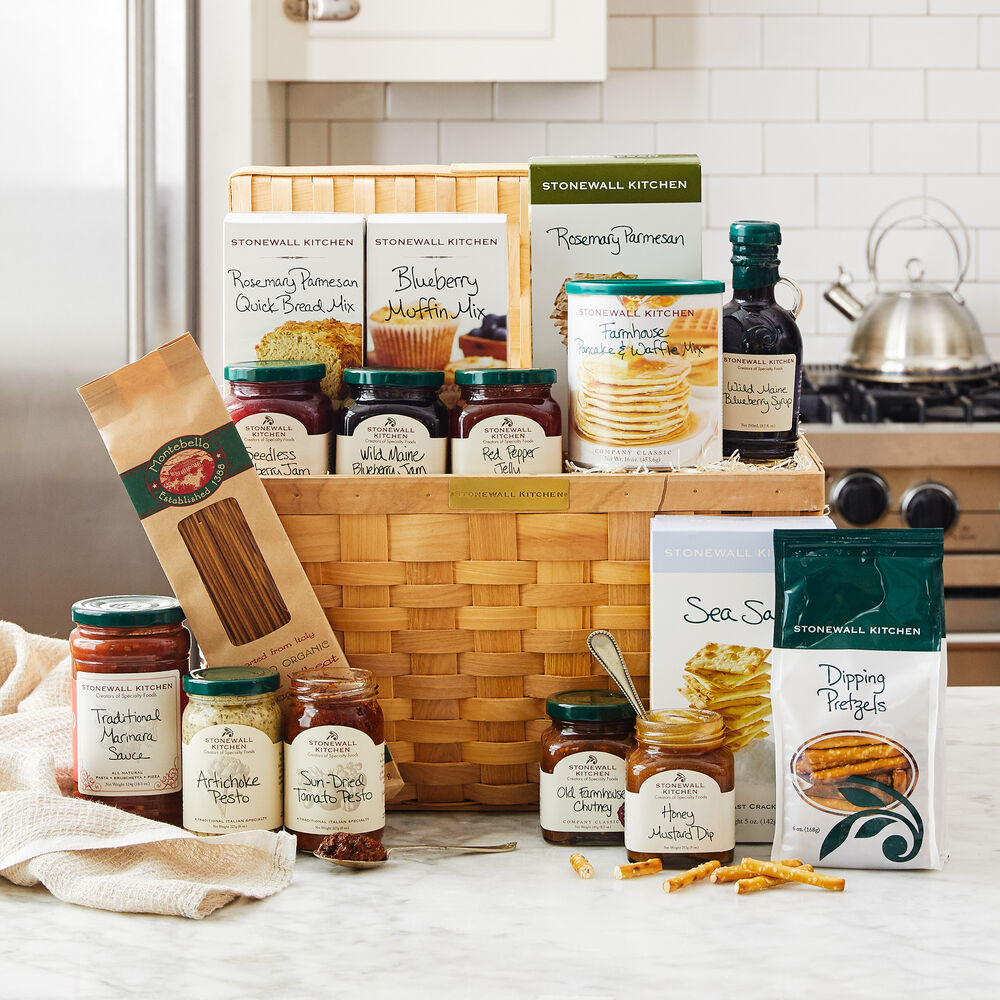
Shopping for food gifts can be time-consuming, not to mention the endless choices that make it hard to pick the perfect present. And let’s be real, going to the store can be a hassle, especially when you’re on a tight schedule. Read More.
The 14 Ultimate Ranking of Trader Joe’s 2024 Boxed Mixes

Let’s be real—life is busy, and sometimes we just need a little boxed magic to get a delicious treat on the table without breaking a sweat. Luckily, Trader Joe’s has our backs with their incredible (and sometimes quirky) array of boxed mixes. Read More.
14 Iced Tea Brands That Stand Out from the Rest
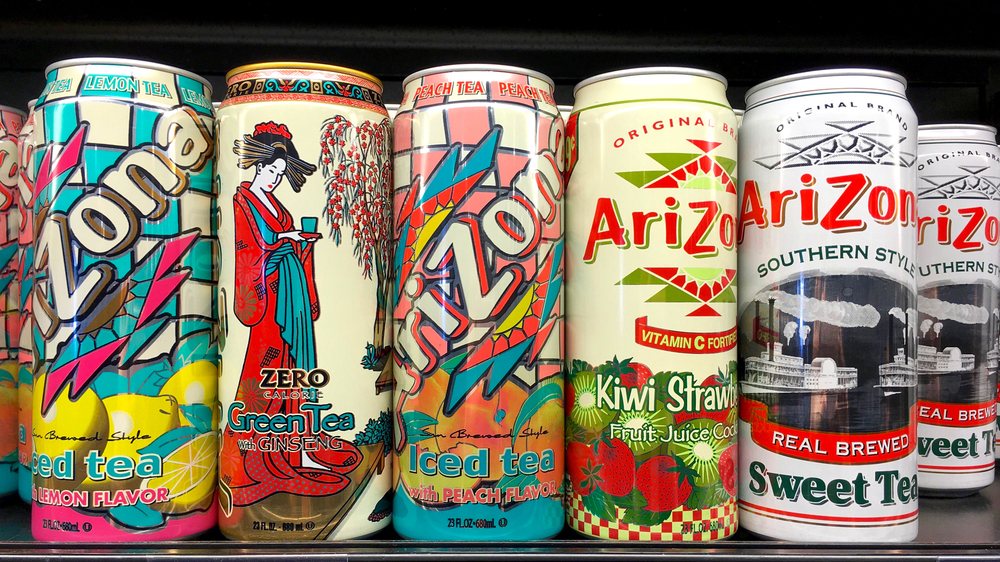
Iced tea is a refreshing and delicious drink, perfect for any time of the year. Whether you like it sweet, unsweetened, or flavored, there’s an iced tea brand out there that will suit your taste. Read More.


